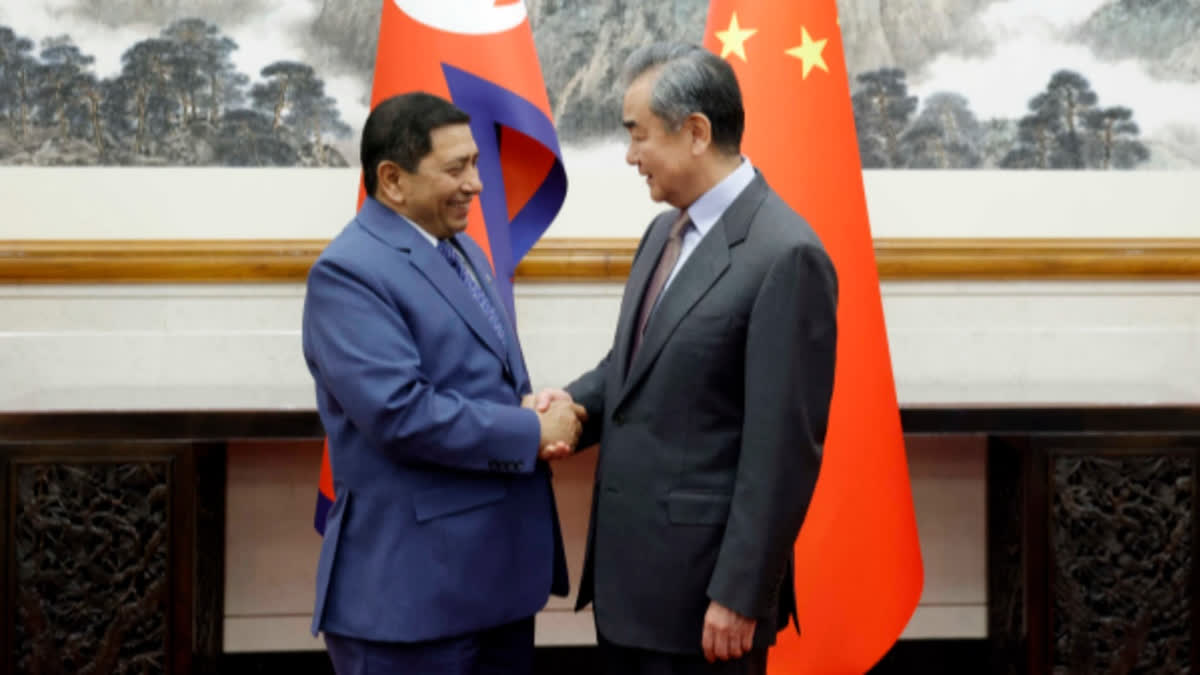New Delhi: In what will be a cause of major concern for India in terms of strategic security in the immediate neighbourhood, Nepal and China have again decided to implement Chinese President Xi Jinping’s pet Belt and Road Initiative (BRI) in the Himalayan kingdom.
The two sides agreed to sign the BRI implementation plan at the earliest during delegation-level talks between visiting Nepali Deputy Prime Minister and Foreign Minister Narayan Kaji Shrestha and his Chinese counterpart Wang Yi in Beijing on Tuesday.
The Kathmandu Post newspaper quoted a Nepali participant in the meeting as saying that both sides agreed to sign the implementation plan “as soon as possible”. Though no specific date has been finalised, “it could happen during an upcoming foreign secretary-level meeting in Kathmandu or on the seventh anniversary of the signing of the BRI on May 12, or during any other high-level visit between Nepal and China”, according to the participant.
Though Nepal and China had signed the BRI framework agreement on May 12, 2017, and China had forwarded the text of a plan in 2019, no further has been made mainly due to Kathmandu’s concerns over debt liabilities. Nepal has made it clear to China that it is not interested in taking commercial loans for implementing BRI projects.
The BRI is a global infrastructure development strategy adopted by the Chinese government in 2013 to invest in over 150 countries and international organisations. It is considered a centrepiece of President Xi’s foreign policy. It forms a central component of Xi’s “Major Country Diplomacy”, which calls for China to assume a greater leadership role in global affairs in accordance with its rising power and status.
Observers and sceptics, mainly from non-participant countries, including the US, interpret it as a plan for a Sino-centric international trade network. Critics also blame China for putting countries participating in the BRI under debt traps. In fact, last year, Italy became the first G7 country to pull out of the BRI. Sri Lanka, which participated in the BRI, eventually had to lease out the Hambantota port to China due to debt repayment issues.
India has opposed the BRI right from the beginning, mainly because its flagship project, the China-Pakistan Economic Corridor (CPEC), passes through Pakistan-occupied Kashmir.
In view of all these, Nepal is wary of getting trapped in unsustainable debt owed to China through BRI loans for expensive infrastructure projects. Nepal’s annual debt payments to China have already been rising rapidly over the last decade. Highly concessional terms offered by other lenders make taking on costlier Chinese commercial loans for BRI projects unappealing.
Nepal also understands India’s concerns over BRI projects in the immediate neighbourhood. India views some planned BRI infrastructure corridors through Nepal as impinging on disputed territory it claims. Nepal wants to avoid straining ties with its powerful neighbour India by appearing to take sides in India’s rivalry with China. New Delhi has historically exercised considerable influence over Nepali politics and policies.
Frequent changes in government and coalition politics in Nepal have made it difficult to remain consistent on BRI policies. There are domestic political divisions in Nepal over the costs/benefits and potential loss of sovereignty from deeper BRI engagement with China. Implementation has been slowed by bureaucratic inefficiencies and difficulties meeting China’s approval conditions.
In fact, it is worth noting that though the BRI framework agreement was signed on May 12, 2017, it has not yet been tabled in Nepal’s parliament. According to the Kathmandu Post report, the main opposition Nepali Congress and other parties have asked the government to table the agreement in Parliament and make public the terms and conditions of the BRI implementation plan before signing it.
The renewed pledge to sign the BRI execution plan was taken after a new Left government came to power less than a month ago in Nepal. Should India now be concerned?
“The fact that the date for signing the agreement could not be finalised means that both sides are yet to agree on the financial terms and conditions,” Nihar R Nayak, a Research Fellow at the Manohar Parrikar Institute of Defence Studies and Analyses and an expert on issues about Nepal and the eastern Himalayas, told ETV Bharat.
“Recently, China has brought some changes in BRI projects implementation plans in terms of granting loans and showing flexibility,” Nayak said. He also stated that Nepal understands India’s concerns and would definitely take these into consideration before signing the BRI implementation plan.
“China, on the other hand, will feel safer in making investments with a Left government in power in Nepal,” Nayak said. “In fact, in the last 15 days, there has been a sudden increase in the number of Chinese officials and delegations visiting Nepal.” He also pointed out that due to the poor administrative system of Nepal, over the years many Chinese people were able to take citizenship cards in Nepal. “This is a matter of huge concern for India,” he said.
According to Nayak, even if the two sides sign the BRI implementation plan, railway projects in the Himalayan nation will not come up soon. At the most, the two sides might go for smaller projects that are cost-effective. “However, any BRI project coming up the Terai region bordering India will be a cause of major concern for New Delhi,” Nayak added. So, will Nepal go ahead with signing the BRI implementation plan? Watch this space.
Read More



